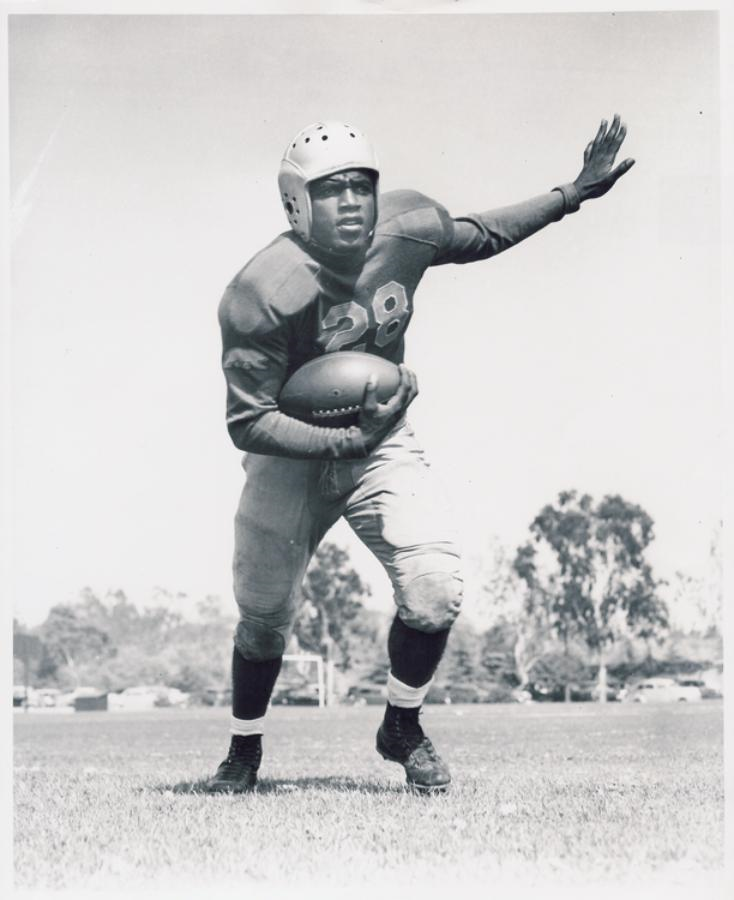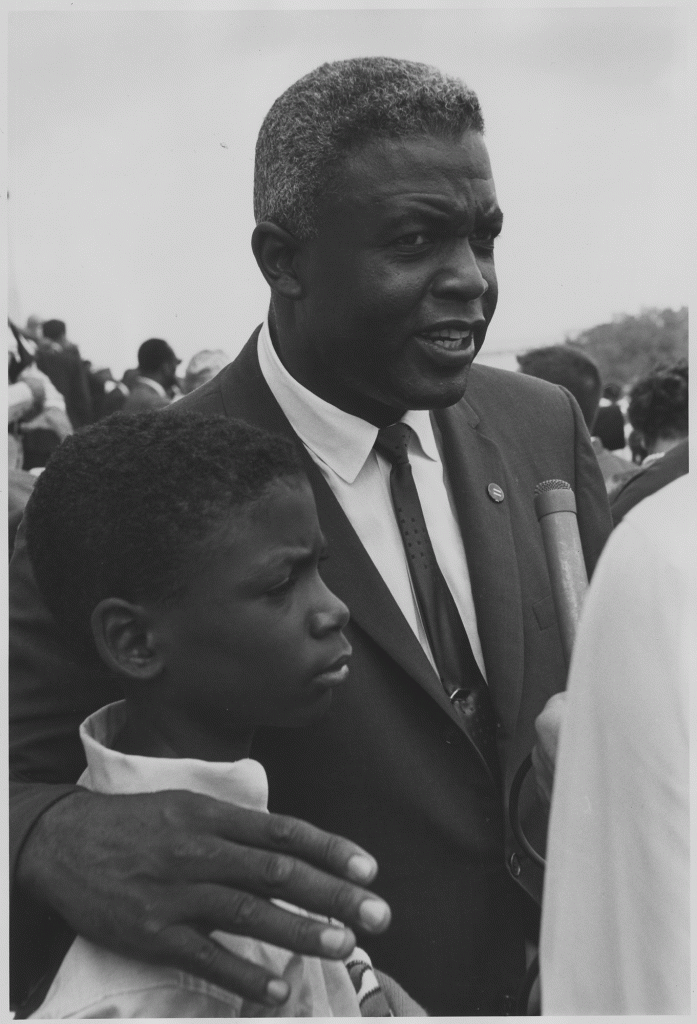Jackie Robinson is best known for becoming the first Black player in Major League Baseball when he joins the Brooklyn Dodgers in 1947. But before breaking professional baseball’s “color barrier,” Robinson makes a name for himself at the University of California at Los Angeles, where he remains the only athlete to ever letter in four sports – baseball, football, basketball and track and field.

Born in Cairo, Georgia in 1919, Robinson’s family moves to California when he’s a child. He attends Pasadena Junior College — now Pasadena City College — before enrolling at UCLA. The future Hall of Famer struggles in baseball, batting only .097 as UCLA’s shortstop. His fielding and base-running keep him on the roster. He fares better in other sports.

On the basketball court, Robinson twice leads the Southern Division of the Pacific Coast Conference in scoring and is named West Coast Conference MVP — despite standing 5′ 11″. In track and field, he wins the NCAA title in long jump in 1940.
On the gridiron, he stars on offense and special teams, leading the nation in average punt return yardage and helping lead UCLA to its first undefeated season in 1939. The Stanford Daily calls him “Lightning Jack Robinson.”
In 1942, Robinson enlists in the United States Army. While serving in Texas, he’s court-martialed for refusing to move to the back of a military bus. He’s eventually acquitted and receives an honorable discharge.
When Robinson plays college football, Black players are a rarity. Most teams have no Blacks on their rosters. Those that do have Black players often adhere to a so-called “gentleman’s agreement” to bench them when playing against segregated schools.
UCLA doesn’t abide by this “agreement,” and with four Black players, the university’s 1939 squad is the most racially integrated in college football history.

In addition to Robinson, those players are Ray Bartlett ’44, Kenny Washington ’41, and Woody Strode ’39. Bartlett, a teammate and friend of Robinson’s at Pasadena Junior College, is backup to Robinson at running back and also plays for the Bruins baseball team. He later serves in World War II and the Korean War, and becomes only the second Black in the Pasadena Police Department, retiring after 20 years.
Washington, who doubles as a tailback and defensive back, is named the nation’s top college player his senior year. He also plays baseball at UCLA and is considered a better athlete than Robinson in both sports.
But Washington is snubbed by National Football League teams, which have an unspoken ban on Black players. Washington instead joins the Los Angeles Police Department and continues playing football on semi-pro teams. In 1946, Washington signs with the Los Angeles Rams, breaking the National Football League’s color barrier.

Shortly thereafter, Strode joins Washington on the Rams, becoming the second Black player in the modern-day National Football League. Strode goes on to have a successful acting career, and is nominated for a Golden Globe for Best Supporting Actor in 1960 for his role in “Spartacus.”
But it’s Robinson who becomes a household name, both for his athletic abilities and his leadership in the civil rights movement.
During his baseball career, Robinson is a six-time All-Star, World Series Champion and Hall of Famer, but his work off the baseball diamond is just as, if not more, inspiring.
After retiring from the sport in 1956, Robinson continues his work advocating for racial equality, serving on the board of the National Association for the Advancement of Colored People, opening a black-owned and operated commercial bank, building housing for low-income families and protesting major league baseball’s lack of minority managers.
“I’m not concerned with your liking or disliking me… all I ask is that you respect me as a human being.”
— Jackie Robinson
Robinson dies of a heart attack in 1972, at age 53. In 1997, Major League Baseball retires his number across all teams—the first professional athlete to be so honored. And each year, on April 15, every Major League Baseball player wears No. 42 to commemorate the day Robinson broke the color barrier in professional baseball.
